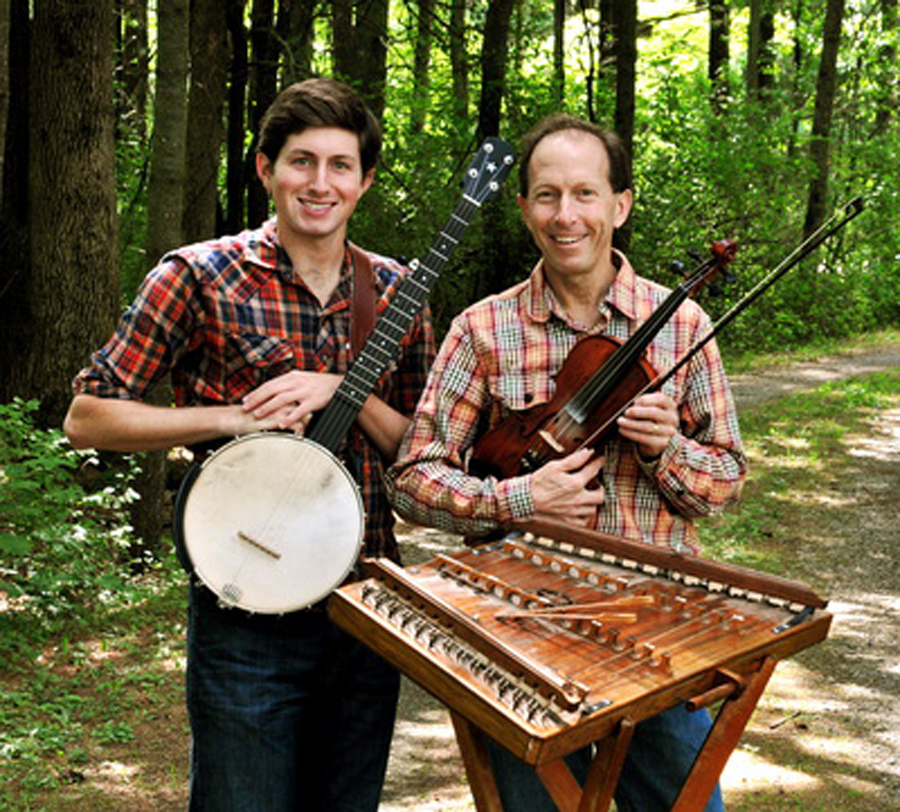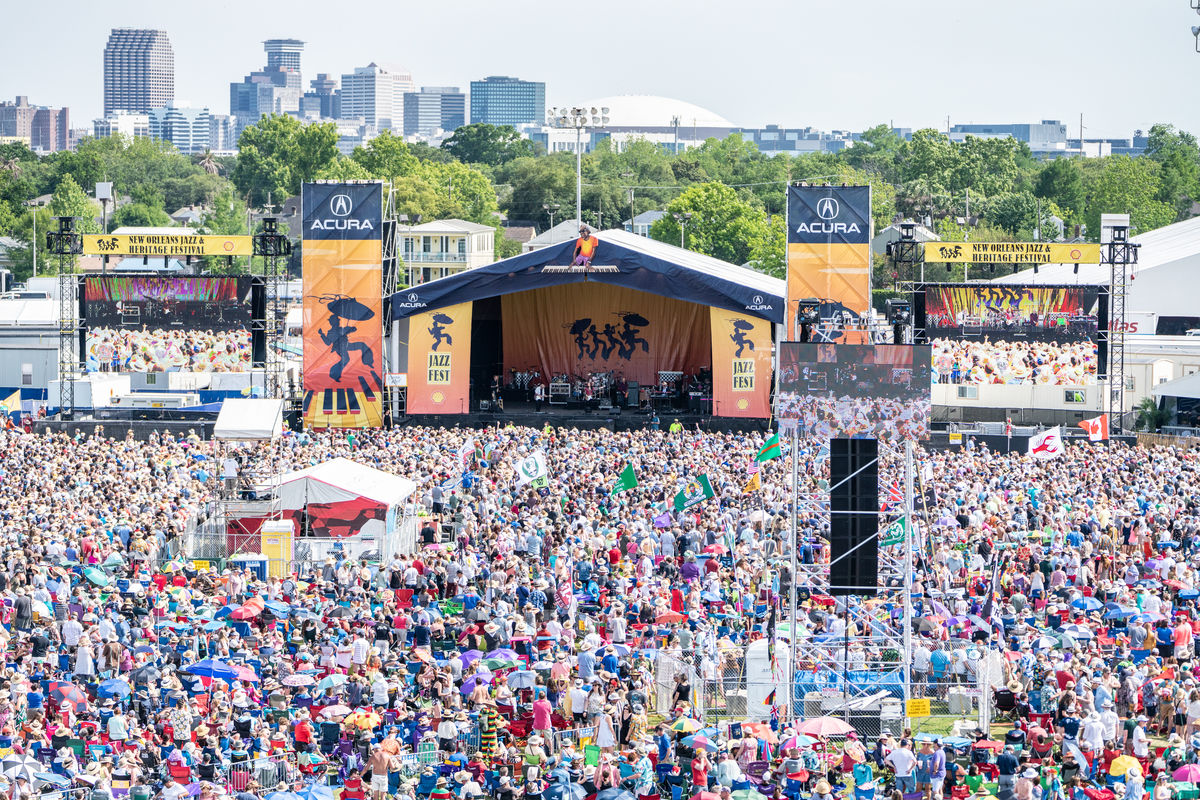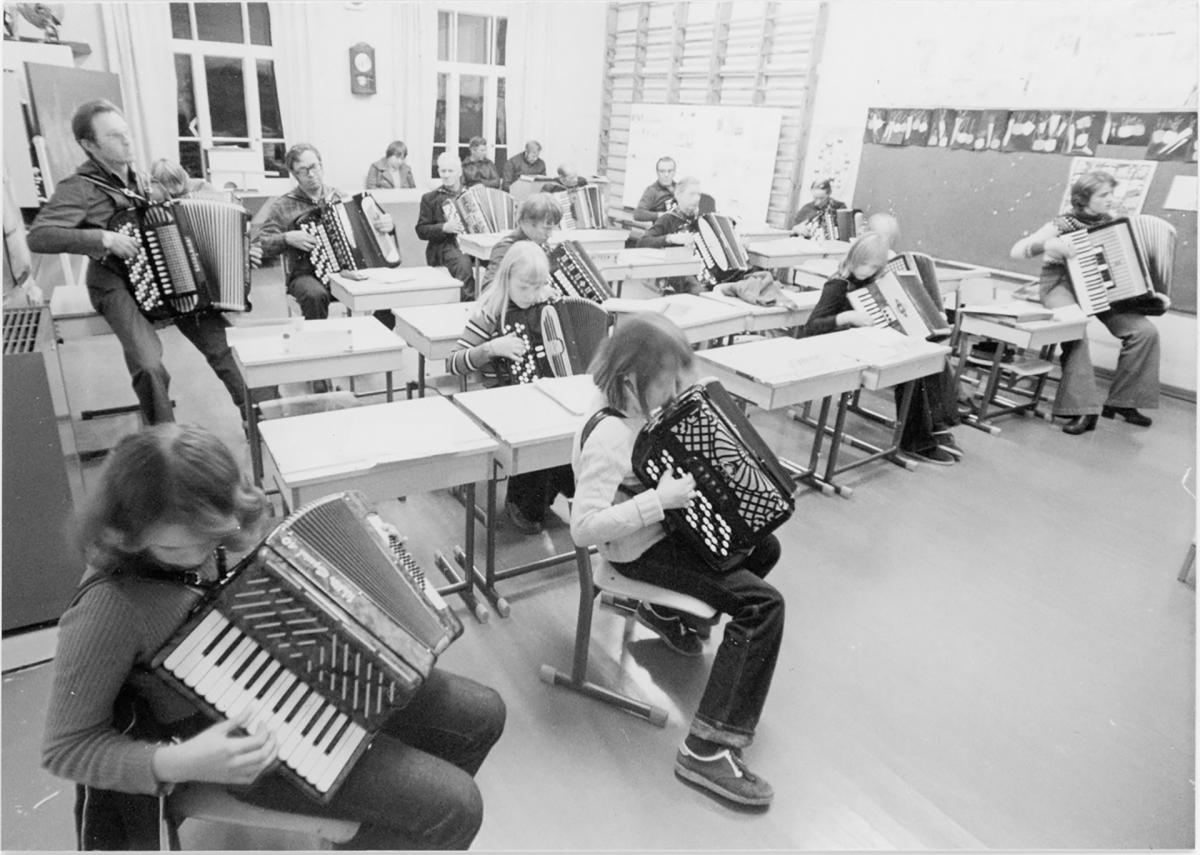Musical Landscapes - How Geography Influences Music
In this article, we will explore the fascinating relationship between geography and music, delving into how musical landscapes surroundings influence the creation and evolution of musical traditions.
Author:Jane RestureAug 19, 202364 Shares31.9K Views

Music has an uncanny ability to evoke emotions, transport us to distant places, and bridge cultural gaps. While the creation of music is often attributed to human creativity, it's essential to recognize the profound impact that geography and the natural environment have on shaping musical styles, instruments, and even the emotional resonance of melodies. In this article, we will explore the fascinating relationship between geography and music, delving into how musical landscapessurroundings influence the creation and evolution of musical traditions.
The Rhythm Of The Earth - Geography's Melodic Influence
Mountainous Landscapes And High Notes
Imagine standing amidst towering mountain peaks, surrounded by pristine snow and breathtaking views. The ruggedness of mountainous landscapes often finds its echo in the soaring melodies and high-pitched notes of traditional music from regions like the Andes in South America or the Himalayas in Asia. The use of instruments like panpipes, flutes, and strings mimic the winds that rustle through the peaks, creating a musical connection to the terrain.
Coastal Serenades And Sea Shanties
Coastal regions, with their proximity to the vast expanse of the ocean, have birthed musical styles that capture the ebb and flow of the sea. Sea shanties, work songs sung by sailors, are a prime example. The rhythmic nature of these songs reflects the waves' motion, and their lyrics often tell tales of maritime adventures and struggles.
Instruments Born From Nature's Bounty
Wood And Wind - Flutes And Panpipes
In forested landscapes, the availability of wood has led to the creation of woodwind instruments like flutes and panpipes. These instruments produce warm, resonant tones that reflect the tranquility of wooded areas. The haunting melodies they produce often mimic the sounds of wind rustling through leaves or water trickling in streams.
Drums And Desert Beats
In contrast, arid desert landscapes have given rise to the rhythmic intensity of drum-based music. The desert's vastness and echoes find their sonic counterpart in the beating of drums, which resonate powerfully across the open space. The rhythms are both hypnotic and primal, reflecting the stark beauty of the surroundings.
Cultural Crossroads - Where Geography Meets Human Migration
Trade Routes And Melodic Exchange
Geographical features such as mountain passes, river valleys, and coastlines have historically acted as natural trade routes, fostering the exchange of goods, ideas, and, of course, music. As cultures intersected along these routes, musical traditions merged, resulting in unique fusion styles that draw from diverse influences. The Silk Road, for instance, played a pivotal role in the spread of musical instruments and melodies across Asia, Europe, and the Middle East.
Isolated Islands And Distinctive Soundscapes
Isolated islands, surrounded by the vastness of the ocean, have nurtured music that often remains distinct from mainland traditions. The seclusion of these landscapes has allowed for the development of unique instruments and vocal styles. Hawaiian slack-key guitar and Caribbean steel drums are prime examples of island-influenced musical creations that have captured the essence of their surroundings.
Harmonizing Human Connection And Geographic Diversity
Urban Jungles And Sonic Diversity
In bustling urban centers, where skyscrapers dominate the skyline and streets are alive with the constant movement of people, music becomes a tapestry woven from diverse threads. These dynamic environments bring together people from various backgrounds, resulting in a rich blend of musical styles. Jazz, born in the vibrant streets of New Orleans, and hip-hop, nurtured in the boroughs of New York City, exemplify how urban landscapes foster genres that reflect the complexity and energy of city life.
Forest Groves And Folk Traditions
Deep within ancient forests, where sunlight filters through leaves and streams babble softly, folk traditions often take root. These serene landscapes inspire music that embraces simplicity, community, and a connection to the earth. Folk instruments like acoustic guitars, fiddles, and mandolins find their resonance in these environments, producing melodies that echo the tranquil beauty of wooded settings.
Caves As Cathedrals Of Sound
Caves, with their natural acoustics, have served as unique venues for music-making throughout history. From ancient rituals to modern concerts, these subterranean spaces enhance the auditory experience, creating an otherworldly ambiance that complements the music. Musicians and composers have taken advantage of the resonant qualities of caves to craft immersive sonic experiences that are both haunting and ethereal.
Canyons And Echoes Of Expression
Canyons and gorges, carved by the relentless force of water over millennia, amplify sound in a manner similar to natural amphitheaters. Indigenous cultures often used these geological formations to communicate over vast distances through songs and chants. The echoing effect of canyons adds a dimension of depth to the music, transforming simple melodies into powerful expressions that reverberate through the landscape.
The Evolution Of Soundscape - From Tradition To Modernity
Technological Progress And Urban Beats
In today's interconnected world, technology has reshaped how music is produced, distributed, and experienced. Urban landscapes, with their towering skyscrapers and bustling streets, have become breeding grounds for electronic dance music(EDM), techno, and other electronically driven genres. These genres reflect the fast-paced, digital nature of urban life and provide an outlet for individuals to connect through shared musical experiences.
Virtual Landscapes And Digital Ethnography
The rise of the internet and digital platforms has allowed for the exploration of musical landscapes without physical travel. Through virtual tours, recordings, and online collaborations, music enthusiasts can traverse geographical boundaries to experience the sounds of far-flung places. Digital ethnography enables researchers and artists to connect with global musical traditions and bring them into the digital realm, preserving and sharing cultural heritage.
Embracing Harmony - Geography's Impact On Musical Identity
As we reflect on the intricate interplay between geography and music, we come to appreciate the role that our planet's diverse landscapes play in shaping our musical heritage. From the soaring melodies inspired by mountains to the rhythmic beats echoing through deserts, each geographical setting leaves its indelible mark on the sonic tapestry of humanity. As we journey through these musical landscapes, we not only connect with the world around us but also discover the universal language that transcends borders and speaks to the heart and soul of every individual.
Preserving Musical Heritage Amidst Changing Landscapes
In the face of rapid urbanization, environmental shifts, and cultural changes, the preservation of musical traditions becomes a crucial endeavor. Just as landscapes evolve over time, so do the musical practices that emerge from them. The challenge lies in maintaining a delicate balance between embracing innovation and safeguarding the authenticity of age-old melodies.
Cultural Resilience Through Music
Indigenous communities around the world have relied on music to maintain cultural identity and pass down ancestral knowledge. The melodies, rhythms, and instruments unique to their geographical regions serve as a means of preserving oral history and cultural heritage. By celebrating and sharing these musical traditions, these communities can reinforce their resilience and assert their rightful place in the ever-changing world.
Environmental Consciousness And Sonic Stewardship
As we become more aware of the impact of human activity on the environment, musicians and composers are increasingly using their art to raise awareness about ecological issues. Inspired by the landscapes that have nurtured their musical creativity, artists are crafting compositions that speak to the urgency of conservation. From symphonic pieces inspired by endangered species to electronic compositions emulating the sounds of vanishing rainforests, music has become a powerful medium for conveying the significance of protecting our planet.
A Global Harmony - Crossing Boundaries Through Music
Musical Diplomacy And Cross-Cultural Collaboration
In an era of globalization, music acts as a bridge that connects people across diverse geographies and cultures. Musicians from different parts of the world come together to create fusion genres that celebrate the shared human experience while honoring their individual backgrounds. Such collaborations serve as a form of cultural diplomacy, fostering understanding and dialogue in a world that can sometimes feel divided.
Musical Tourism - A Journey Beyond Maps
The intertwining of music and geography has given rise to a unique form of tourism—musical tourism. Travelers seeking more profound connections with the places they visit now include musical experiences as essential components of their journeys. Whether attending traditional performances, participating in local music workshops, or exploring the history of regional instruments, musical tourism provides a deeper understanding of cultural landscapes beyond what traditional tourist attractions offer.
Music As Catalyst - Local Development Through Cultural Expression
In the realm of community and local development, music emerges as a powerful catalyst that transcends entertainment to foster cultural identity, social cohesion, and economic growth. The harmonious connection between music and local development lies in its ability to bring people together, empower communities, and contribute to the overall well-being of a region.
Preserving Cultural Heritage
Music often embodies the soul of a community's cultural heritage. From indigenous rhythms echoing through generations to folk songs passed down through centuries, local musical traditions serve as repositories of history and identity. When communities actively engage in preserving and sharing their musical heritage, they not only honor their past but also create a cultural foundation that distinguishes them from others. This preservation promotes a sense of pride and belonging among residents and enriches the local tapestry.
Strengthening Social Bonds
In the collaborative process of creating and performing music, social bonds are forged and strengthened. Community choirs, orchestras, and bands unite individuals across diverse backgrounds, fostering a sense of unity and shared purpose. Through musical practices, people learn to collaborate, communicate, and appreciate different perspectives, thereby enhancing social interaction and reducing social isolation. Music becomes a means to bridge generational, ethnic, and socio-economic divides, building stronger and more inclusive communities.
Cultivating Creative Economies
Music has the potential to contribute significantly to local economies. Festivals, concerts, and music-related events can draw visitors, stimulate tourism, and infuse capital into the community. Furthermore, local music scenes generate opportunities for musicians, sound engineers, event organizers, and other professionals. By nurturing a thriving music industry, a region can tap into creative economies, creating jobs and sustainable sources of income. This economic impact is not limited to traditional genres; emerging digital platforms offer new avenues for local musicians to reach global audiences.
Empowering Youth And Education
Music education plays a pivotal role in nurturing talent, enhancing cognitive skills, and promoting personal development among young individuals. By providing access to music education and training, communities empower their youth with valuable skills that extend beyond the realm of music itself. Moreover, musical education instills discipline, teamwork, and self-expression, contributing to the overall growth and resilience of the next generation. Schools, community centers, and local initiatives that support music education contribute to the well-rounded development of their young citizens.
Cultural Tourism And Sense Of Place
Local music traditions can become a unique selling point for cultural tourism. Travelers seek authentic experiences that immerse them in the local culture, and music offers an immediate and resonant way to achieve this. Festivals celebrating regional music, traditional performances, and interactive workshops can attract visitors, enhancing the local economy and encouraging a deeper understanding of the community's identity. Moreover, as visitors engage with the music of a region, they develop a richer connection to the place, fostering a sense of place and appreciation.
Music's role in local development is far-reaching and transformative. By embracing and supporting musical practices, communities tap into a wellspring of creativity, culture, and connectivity that nurtures growth on multiple levels. As music reverberates through the streets, halls, and hearts of a locality, it becomes a testament to the enduring and symbiotic relationship between cultural expression and the development of vibrant, resilient, and harmonious communities.
Case Study - British Musical Landscape
In the exploration of how geography influences music, one notable case study that stands out is the emergence of the "BritishMusical Landscape." This case study sheds light on how geographers and music enthusiasts came together to explore the intricate relationship between music and place, leading to the development of a transdisciplinary approach that bridges the gap between academic disciplines.
The Genesis Of "The Place Of Music"
In 1993, a groundbreaking conference titled "The Place of Music" took place at University College London. This event marked a significant moment of convergence between geography and music, as it brought together scholars, researchers, and individuals with a shared passion for both disciplines. The conference's primary aim was to delve into the geographical imagination and explore how music is intricately intertwined with the concept of place. This event laid the foundation for a deeper exploration of the geographic factors influencing musical practices and expressions.
Transdisciplinary Exploration
The conference was followed by a theme issue of the "Transactions of the Institute of British Geographers" in 1995, focusing on music and its relationship to geography. This publication emphasized the need for a transdisciplinary approach—one that recognizes that music can't be confined to a single discipline but rather requires collaboration and insights from various fields.
In 1998, the culmination of these efforts resulted in the publication of "The Place of Music," a book edited by Andrew Leyshon, David Matless, and George Revill. The book aimed to further the exploration of the geographical imagination and the interplay between music and place. Importantly, it promoted the idea that contributors need not exclusively identify as geographers to contribute valuably to this study. This transdisciplinary stance is in line with the conference's original intention of fostering collaboration and dialogue between disciplines that might not otherwise intersect.
Music, Place, And Jacques Attali's Influence
The development of the British Geography of Music movement was significantly influenced by the work of Jacques Attali, particularly his 1985 book "Noise: The Political Economy of Music." Attali's ideas resonated strongly with the scholars involved in this movement, as he delved into the sociocultural implications of music and its role in shaping societies. His insights about the economic, political, and cultural dimensions of music encouraged geographers and other scholars to consider music's broader significance within geographic and societal contexts.
Implications And Insights
The British Geography of Music movement serves as a remarkable case study that exemplifies how geography can transcend its traditional boundaries to interact with other disciplines. This case study showcases how a transdisciplinary approach can lead to a more comprehensive understanding of the world around us, emphasizing the importance of collaboration, diverse perspectives, and the exploration of intricate connections between seemingly disparate disciplines.
Ultimately, the British Geography of Music case study highlights the power of academic curiosity, collaboration, and the willingness to explore unconventional intersections between disciplines. It underscores the dynamic relationship between music and place and the enriching insights that emerge when geographers, musicians, and scholars from various fields come together to explore the harmonious interplay of music and geography.
People Also Ask
How Does Geography Influence Music?
Geography exerts a profound influence on music by shaping the sounds, rhythms, instruments, and styles that emerge from different regions. The physical environment, including landscapes, climate, and natural resources, affects the cultural and social dynamics of a place, which, in turn, impacts the way people create and appreciate music. For instance, mountainous areas often inspire melodies that mimic the flow of wind, while coastal regions give rise to sea shanties reflecting maritime life. Moreover, trade routes and cultural exchanges along geographical pathways have facilitated the blending of musical traditions, leading to the emergence of fusion genres that span continents.
What Is The Geography Of Music Preferences?
The geography of music preferences refers to how musical tastes and genres vary across different geographical regions. Cultural, social, and historical factors influence the music that resonates with people in specific locations. Local traditions, migration patterns, and exposure to diverse musical influences contribute to shaping regional preferences. For example, certain genres like country music might be more popular in rural areas, while urban centers might embrace a broader range of genres, including pop, hip-hop, and electronic music. Globalization and technology have also played a role in spreading music across borders and diversifying preferences.
Why Is Music Important In Geography?
Music is vital in geography because it serves as a powerful lens through which to understand the complex interactions between people, culture, and their environments. By studying the musical traditions of different regions, geographers can uncover insights into social structures, historical narratives, and connections between communities. Music provides a unique way to explore the relationship between culture and place, shedding light on how people express their identities and forge connections with the landscapes they inhabit. Moreover, music enhances the study of geographic concepts by offering a sensory and emotional dimension that complements traditional academic analysis.
Conclusion
As we journey through the world of music, it becomes evident that geography is not just a backdrop; it's a symphony of inspiration. The melodies, rhythms, and instruments of various musical traditions are deeply intertwined with the natural landscapes that birthed them. Whether it's the haunting notes of wind instruments echoing through mountain ranges or the rhythmic beats that mirror the heartbeat of the desert, music serves as a powerful reflection of our planet's diverse terrain. So, the next time you find yourself lost in a melody, remember that the music you're hearing is, in essence, a musical landscape shaped by the contours of the Earth itself.
Jump to
The Rhythm Of The Earth - Geography's Melodic Influence
Instruments Born From Nature's Bounty
Cultural Crossroads - Where Geography Meets Human Migration
Harmonizing Human Connection And Geographic Diversity
The Evolution Of Soundscape - From Tradition To Modernity
A Global Harmony - Crossing Boundaries Through Music
Music As Catalyst - Local Development Through Cultural Expression
Case Study - British Musical Landscape
People Also Ask
Conclusion

Jane Resture
Author
Since she embarked on her first world trip in 2002, Jane Resture spent the past decades sharing her personal journey and travel tips with people around the world. She has traveled to over 80 countries and territories, where she experienced other cultures, wildlife she had only read about in books, new foods, new people, and new amazing experiences.
Jane believes that travel is for everyone and it helps us learn about ourselves and the world around us. Her goal is to help more people from more backgrounds experience the joy of exploration because she trusts that travel opens the door to the greatest, most unforgettable experiences life can offer and this builds a kinder, more inclusive, more open-minded world.
Latest Articles
Popular Articles




